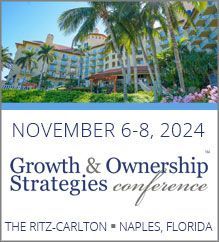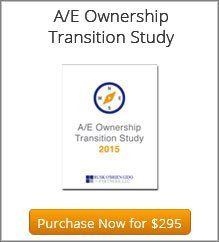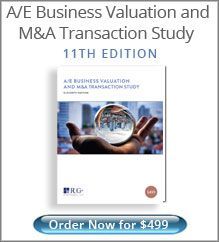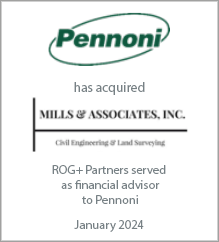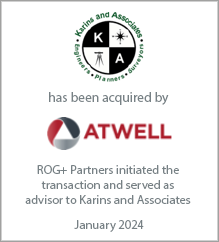Michael S. O'Brien is a principal in the Washington, DC office of Rusk O'Brien Gido + Partners. He specializes in corporate financial advisory services including business valuation, fairness and solvency opinions, mergers and acquisitions, internal ownership transition consulting, ESOPs, and strategic planning. Michael has consulted hundreds of architecture, engineering, environmental and construction companies across the U.S. and abroad.
An “Accountable” CEO is an Effective CEO
An “Accountable” CEO is an Effective CEO
October 6, 2014
“Accountability” may be an overused term these days in business management circles, but in terms of corporate governance and the role of a president & CEO, there may be no more important concept. A corporate governance structure where the CEO is supported and assisted by a strong and qualified board of directors while also being held accountable by that board, is the best recipe for effective leadership and long-term success.
Understandably, the concept of accountability can also be threatening to owners (often founders) accustomed to exercising complete control. This can be a particularly vexing problem when the company is seeking to transition ownership to the next generation. The more ownership transition engagements we perform for architecture, engineering and environmental consulting firms, the more we encounter business owners who insist on retaining a controlling ownership interest until they are ready to fully retire—often out of a fear that their ability to effectively manage the company will be diminished if and when they lose voting control.
I’d submit that this is a fallacy. To begin with, in our experience working with hundreds of A/E firms of all shapes and sizes, we’ve found that some of the most effective and influential leaders are in fact minority interest stakeholders–often holding ownership interests of 10% or less. Furthermore, the moment minority interest shareholders are first brought in as investors is when a formal corporate governance structure—one that provides the CEO with guidance and oversight, should be established. This structure should be established well before the point in the ownership transition where the founder / CEO’s stake falls below a controlling interest level.
Let’s back up for a moment and define the concept of “corporate governance.” Corporate governance refers to the policies and processes by which a company is directed and controlled. Good corporate governance policies create accountability at ALL levels of the organization. Directors are accountable to the shareholders who elect them. Officers are accountable to the directors who appointed them. And the staff is accountable to the officers and managers.
The composition of your board of directors is one of the most important aspects of your corporate governance system. The addition of one or more outside directors—individuals who are not among the shareholder or employee group, and therefore bring less personal conflicts of interest to the table, can help ensure the board conducts its oversight duties appropriately and fairly.
As an example, Mike Matthews, CEO of H&A Architects and Engineers located in Glen Allen, VA will tell you that having an outside advisor on their board has been a tremendous benefit to the firm. Since adding the outside advisor, the other directors have benefited from the outside perspective, and now look at the company more critically. They are also more likely to question or challenge the CEO and other officers on matters of policy and strategy. As Mike puts it, “I need to be on my ‘A game’ at board meetings.
H&A’s by-laws limit ownership to no more than 50% and prohibits the CEO from serving on the board of directors. Because of its strong corporate governance and high level of accountability, H&A’s CEO has been given even greater autonomy with respect to day-to-day operations of the company, and Mike is not afraid to remind the board of the separation of roles and responsibilities between the directors and the management team.
Under a strong corporate governance system, the CEO serves at the pleasure of the board of directors and may be removed and replaced by the board if such a change is deemed to be in the best interest of the company. While such board actions are extremely rare, this structure means that the CEO’s power and influence must stem from his or her competence and ability, rather than the amount of stock owned.
Laney Bisbee is the CEO of Structural Integrity Associates located in San Jose, CA. Structural Integrity provides integrated and innovative analysis, control, and prevention of structural failures of nuclear, fossil fuel, pipeline, and other industrial companies. The company’s by-laws limit ownership by any individual to no more than 5%. However, this ownership limitation has not impacted Laney’s influence as CEO. Every year, during our annual ESOP valuation meetings, I ask Laney about his long term personal plans. His response is always, “I plan to continue working as long as the board will let me.”
Finally, in terms of facilitating ownership transition, an effective corporate governance system that holds the company’s CEO and other officers accountable can often encourage investment by new shareholders. Individuals will usually feel more comfortable investing in a firm with strong corporate governance, than investing in a firm lead by a President/CEO with complete control, no matter how competent that leader is.
If you’d like to learn more about the strategies of some of the industry’s most successful executives, we invite you to join us at the fourth annual Growth & Ownership Strategies Conference in Naples, Florida on November 12–14th.
Latest Perspective
Perfecting the A/E Exit Strategy – Five Key Factors
An enormous A/E generation that kicked off their careers in the 1980s and subsequently started firms or became owners in the 1990s ...
© 2024
Rusk O'Brien Gido + Partners, LLC
Financial Experts for Architects, Engineers, and Environmental Consulting Firms


